
Photography Bliss with the Vintage Zenza Bronica ETRSi (Build Date 1988-2004)
Embarking on a new photographic journey is always a thrill, and my recent acquisition of the Zenza Bronica ETRSi Medium Format Camera has elevated my excitement to new heights. The anticipation of holding this classic piece of photographic equipment in my hands is matched only by the allure of the medium format film photography realm it opens up. A few clicks, a winning bid on eBay, and the package arrived on my doorstep, promising a world of creative possibilities.
Winning this camera on eBay felt like claiming a piece of photographic history. The exhilaration of outbidding fellow enthusiasts, coupled with the eagerness to unpack and explore this medium format marvel, was palpable. As I carefully unwrapped the package, the distinctive weight of the Bronica ETRSI hinted at the craftsmanship within, sparking my imagination about the visual stories it could help me capture.
This blog is a chronicle of my initial foray into the world of medium format photography, an ode to the anticipation that precedes the first click of the shutter. Am I ready to relinquish my old trusty 35mm Canon AE-1 Program? Join me as I unravel the mysteries of this vintage gem and delve into the artistry it promises to unfold with each frame and the future of my Canon AE-1.
Zenza Bronica ETRSi – Unboxing and First Impressions
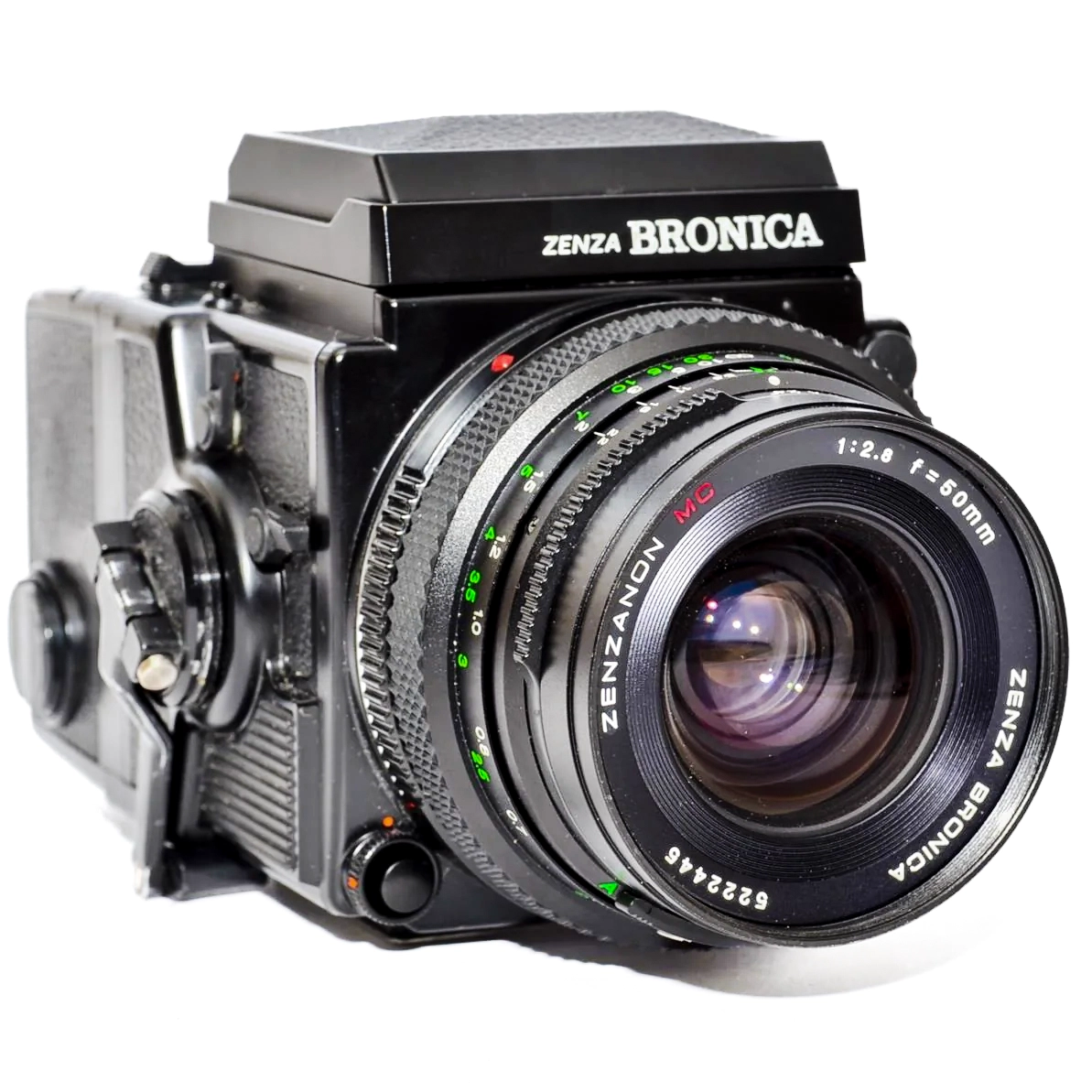
The moment of unveiling the Bronica and the Zenzanon 75mm F2.8 Lens combo, marked the start of my journey. As I eagerly opened the packaging, the weight of the camera in my hands hinted at the robust craftsmanship within. The careful packaging not only safeguarded this vintage gem but also added an air of reverence to the unboxing ritual.
Each layer revealed a piece of photographic history — the camera’s classic design, the smooth contours of the lens, and the meticulous attention to detail. The anticipation built with every unwrapped element, creating a tangible sense of excitement.
Surprises awaited within the confines of the box, from subtle design nuances to unexpected accessories that further elevated the unboxing experience. It was more than acquiring a camera; it was an encounter with a carefully preserved legacy, sparking a cascade of creative possibilities.
This initial inspection set the tone for my journey with the Bronica ETRSI, imprinting the joyous thrill of discovery onto the very first pages of this photographic chapter.
Getting to Know the Bronica ETRSI
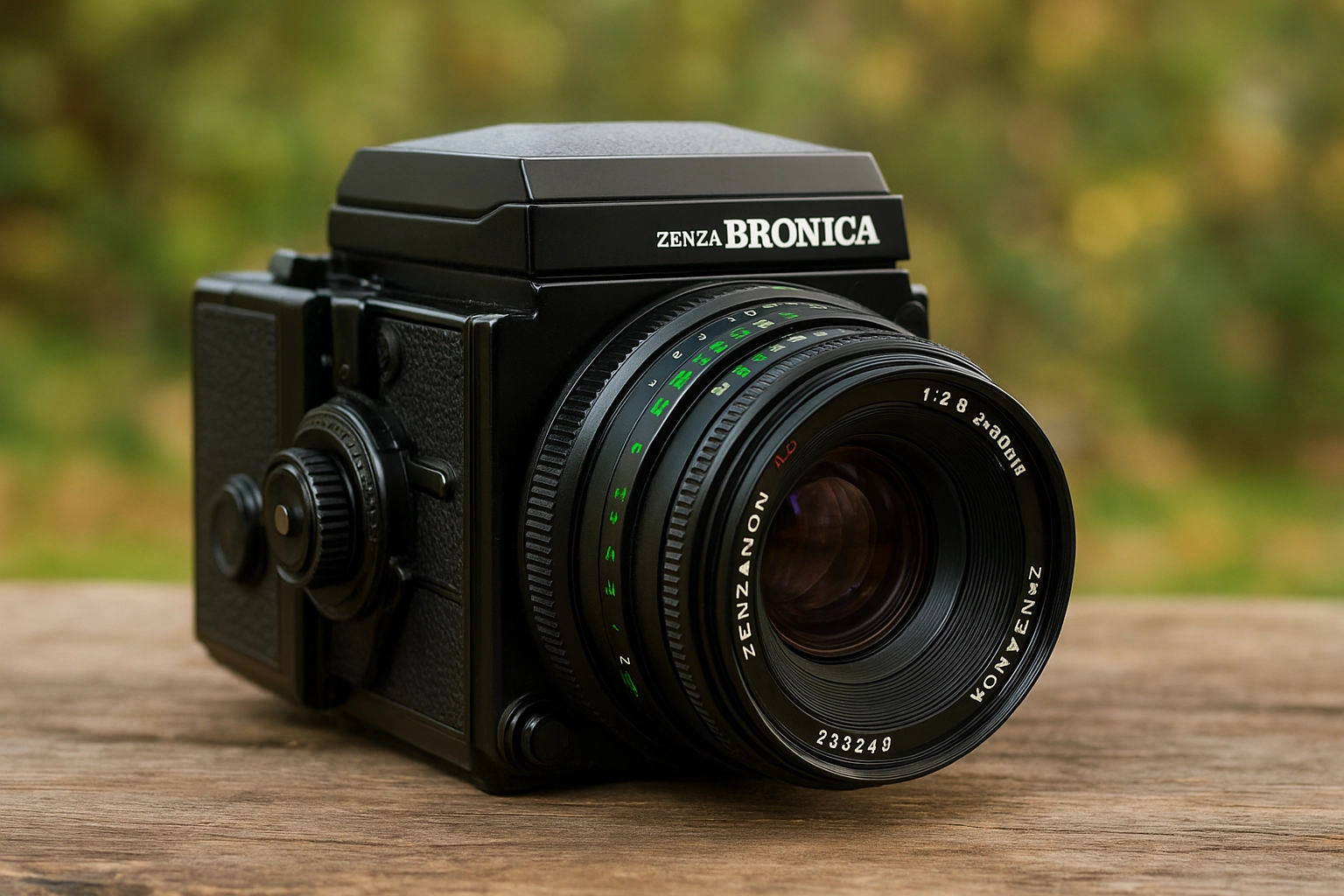
Stepping into the realm of the Bronica is a venture into a world where craftsmanship meets precision. This section unfolds the layers of this medium format marvel, providing a closer look at its defining features and impeccable design.
Overview of Key Features: The Bronica boasts an array of features that beckon both novice and seasoned photographers alike. From its modular design facilitating various accessories to the interchangeable film backs, every facet seems purposefully designed to cater to the demands of discerning photographers. The incorporation of a Zenzanon 75mm F2.8 Lens adds a dynamic dimension to its capabilities, promising unparalleled clarity and depth in each shot.
Build Quality and Design Elegance: The camera’s build quality is nothing short of exemplary. Crafted with a robust yet elegant exterior, the ETRSI stands as a testament to the meticulous engineering of its time.
The tactile feel of the controls, the reassuring click of the shutter release, and the ergonomic layout contribute to a seamless shooting experience. The classic finish and vintage aesthetics evoke a sense of nostalgia and a timeless allure.
In essence, getting acquainted with the Bronica transcended a mere exploration of its specifications; I found it an immersion into a meticulously curated symphony of form and function, promising me a photographic journey unlike any other.
Setting Up the Vintage Camera
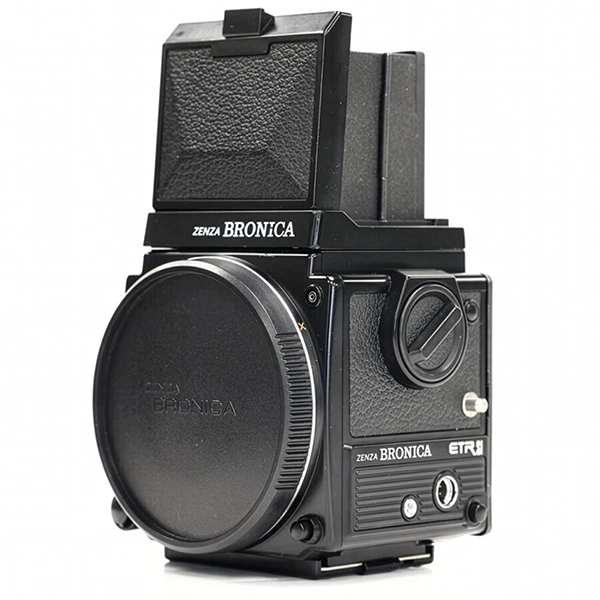
Embarking on the first steps of setup, I found the Zenza Bronica was a blend of excitement and a respectful acknowledgment of its vintage design. This section peels back the curtain on the initial moments of configuring this photographic companion and the intriguing revelations that accompanied this new process.
As I unfolded the user manual, an air of anticipation surrounded the initial setup. The modular design of the ETRSi presented itself as an intricate puzzle waiting to be solved. Attaching the Zenzanon 75mm F2.8 Lens, loading the film back, and adjusting the viewfinder became a carefully orchestrated dance, each step contributing to the symphony of readiness. The tactile nature of the controls, reminiscent of a bygone era, added a tangible connection to the photographic ritual.
No endeavor is without its challenges, and setting up the Bronica was no exception. Navigating the intricacies of medium format film loading demanded a delicate touch, a learning curve that unfolded with patience and a visit to Youtube! Yet, these challenges were not stumbling blocks but rather stepping stones to a deeper understanding of the camera’s personality. Discovering the idiosyncrasies of the film advance mechanism and fine-tuning the focus became part of the initiation.
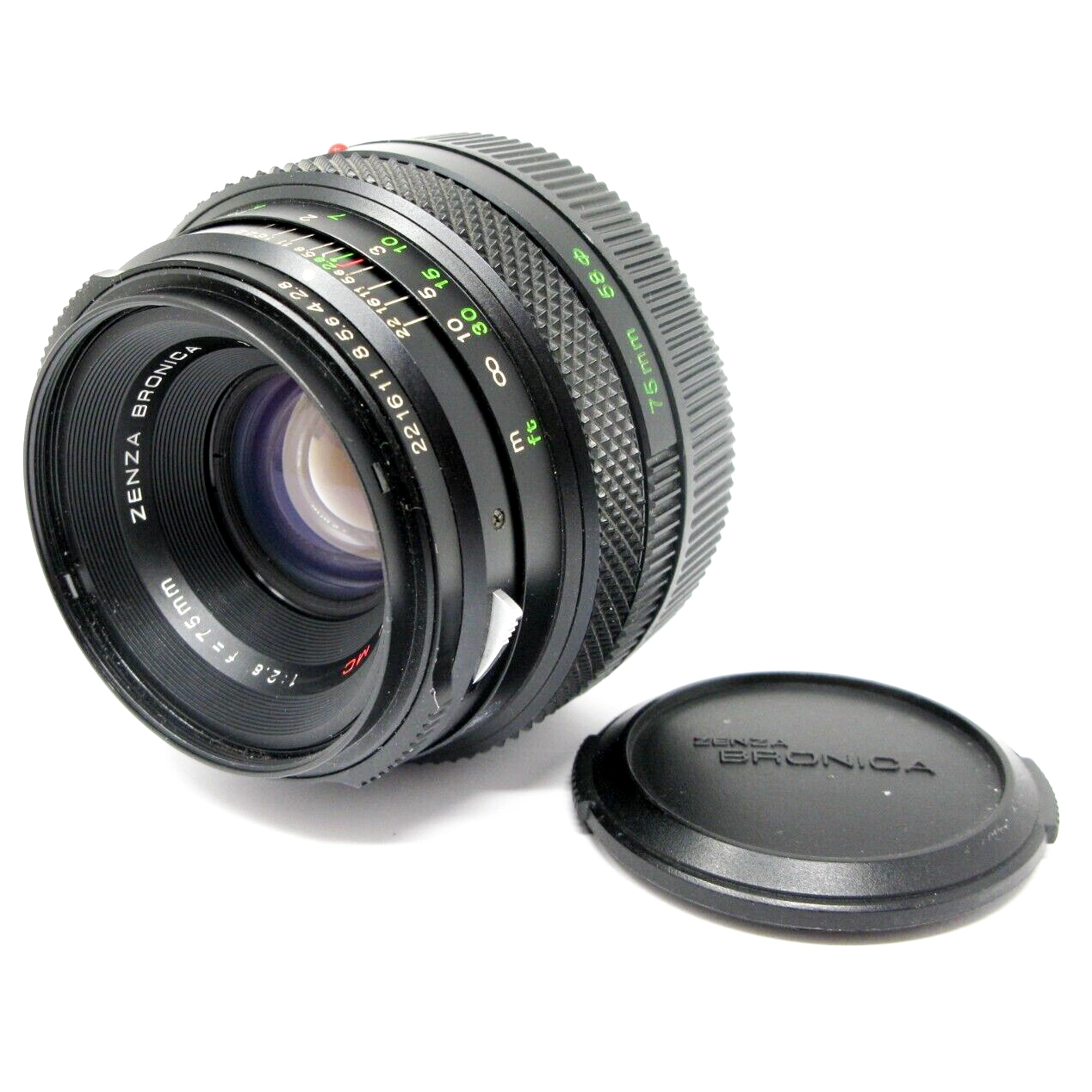
In the realm of the Bronica, the setup was not merely a technical preamble but a tactile initiation into a world where every adjustment forged a connection between my intent and the camera’s mechanical heartbeat. As the setup concluded, the camera stood poised, a creative conduit ready to capture the visions that lay ahead.
Loading the First Roll of 120mm Film
The pivotal moment of loading the inaugural roll of film into the Zenza Bronica marked the transition from anticipation to hands-on creation. This section serves as a guide through the intricacies of this process and shares the sentiments of navigating the unique terrain of medium format film, particularly for those embracing it for the first time.
The Ballet of 120mm Film Loading: The delicate dance of loading the Bronica medium format film into the camera is a tactile ritual that merges precision with patience. Opening the film back revealed the immaculate chamber awaiting its light-sensitive guest. Guiding the film onto the take-up spool, the satisfying click of the film advance lever echoed the beginning of a visual narrative. Engaging with the film winding mechanism felt like threading a story through the intricate mechanics of time capture.
Thoughts on Medium Format Film Handling: For those unaccustomed to the grandeur of medium format film, the larger negatives encapsulate a unique charm. The 120mm film, with its broad surface area, beckons a meticulous approach to handling. The size, weight, and texture of the film stock lend a physicality to the photographic process, demanding a heightened awareness of each frame. The deliberate cadence of advancing the film fosters a connection between the photographer’s intent and the unfolding narrative, turning every shot into a purposeful act of creation.
As the first roll of film settled into its chamber, the Zenza Bronica seemed to exhale a whisper of creative anticipation. Loading the film became more than a technical step; it was an intimate initiation into the tangible artistry of medium format photography. The camera stood ready, a silent collaborator in my upcoming first outing.
Heading Out – Calleva Roman Wall & Silchester 12th Century Church

With the Bronica primed and the lens focused, the canvas of my photographic journey awaited.
Navigating the atmospheric ruins of the Silchester church and old Calleva Roman Wall Ruins, with my newly acquired Bronica Camera felt like a timeless exploration on a dark wintry day, where wind and drizzle conspired to infuse the air with a sense of ancient secrets. The 12th Century Parish Church, a steadfast sentinel to history, became my first subject.
As I manoeuvred through its weathered building and time-worn stone, each click of my Bronica felt like a collaboration with the centuries. The Roman Wall of Calleva, standing resilient despite the weather’s insistence, became the next chapter in my visual narrative. The lens of my camera became a storyteller, freezing moments that whispered tales of a bygone era. Aarron, a talented photographer and a companion on this journey, skillfully captured my exploration.
You can follow his captivating work on Instagram for a glimpse into his lens and the shared visual chronicles of his escapades.
As the shutter clicked for the first time, it immortalised a collection of subjects that spoke to the essence of the moment. From intimate details of everyday life to the expansive landscapes bathed in the soft glow of natural light, each subject became a brushstroke in the visual story I sought to tell. Weathered textures and fleeting moments of serenity intertwined to form a mosaic of the immediate world around me.
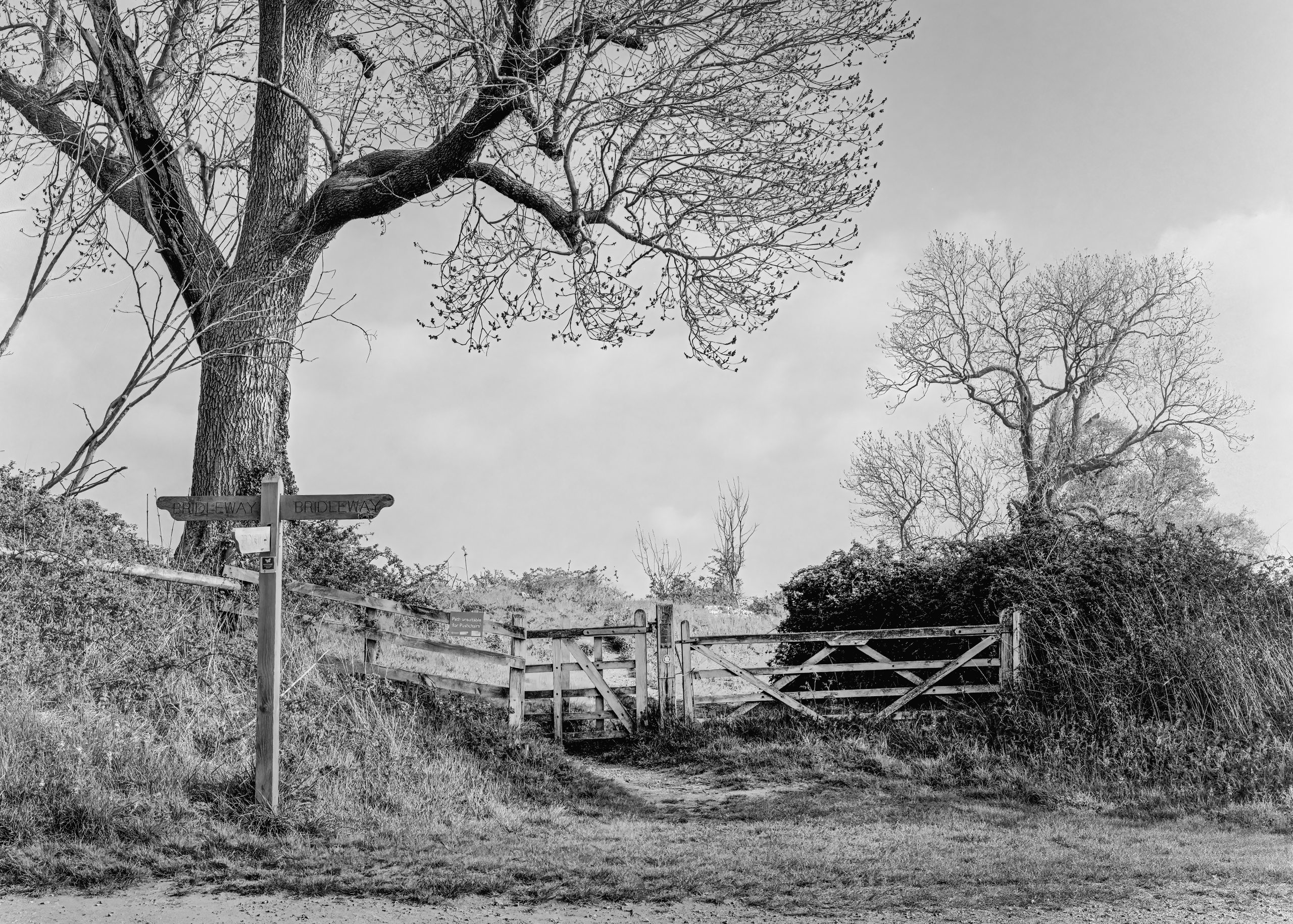
Choosing subjects for those inaugural shots was an exercise in connecting with the immediate environment. The Zenzanon 75mm F2.8 Lens, with its versatile focal length, allowed me to explore both the intimate and the grand, capturing the essence of diverse subjects. The thought process was guided by a desire to encapsulate the beauty in the ordinary—a play of light on a familiar surface, the nuances of texture, or the poetry embedded in mundane scenes.
Every frame became a deliberate exploration, an attempt to translate emotions and stories into visual language. The camera, a conduit for my vision, transformed these chosen subjects into a testament to the artistry inherent in everyday moments. Each shot echoed not only the technical capabilities of the equipment but also the unique perspective it offered, shaping the narrative of my photographic voyage.
With the Zenzanon 75mm F2.8 Lens affixed to the Bronica, the act of capturing moments unfolded into a sensory experience.
The Zenzanon 75mm F2.8 Lens emerged as more than just a piece of glass; it became a portal through which creativity flowed. Its versatile focal length allowed for a diverse range of compositions, from intimate close up shots to sweeping landscapes. The lens’s ability to render details with exceptional clarity and a subtle depth of field became a painter’s brush, adding a layer of artistry to each frame.
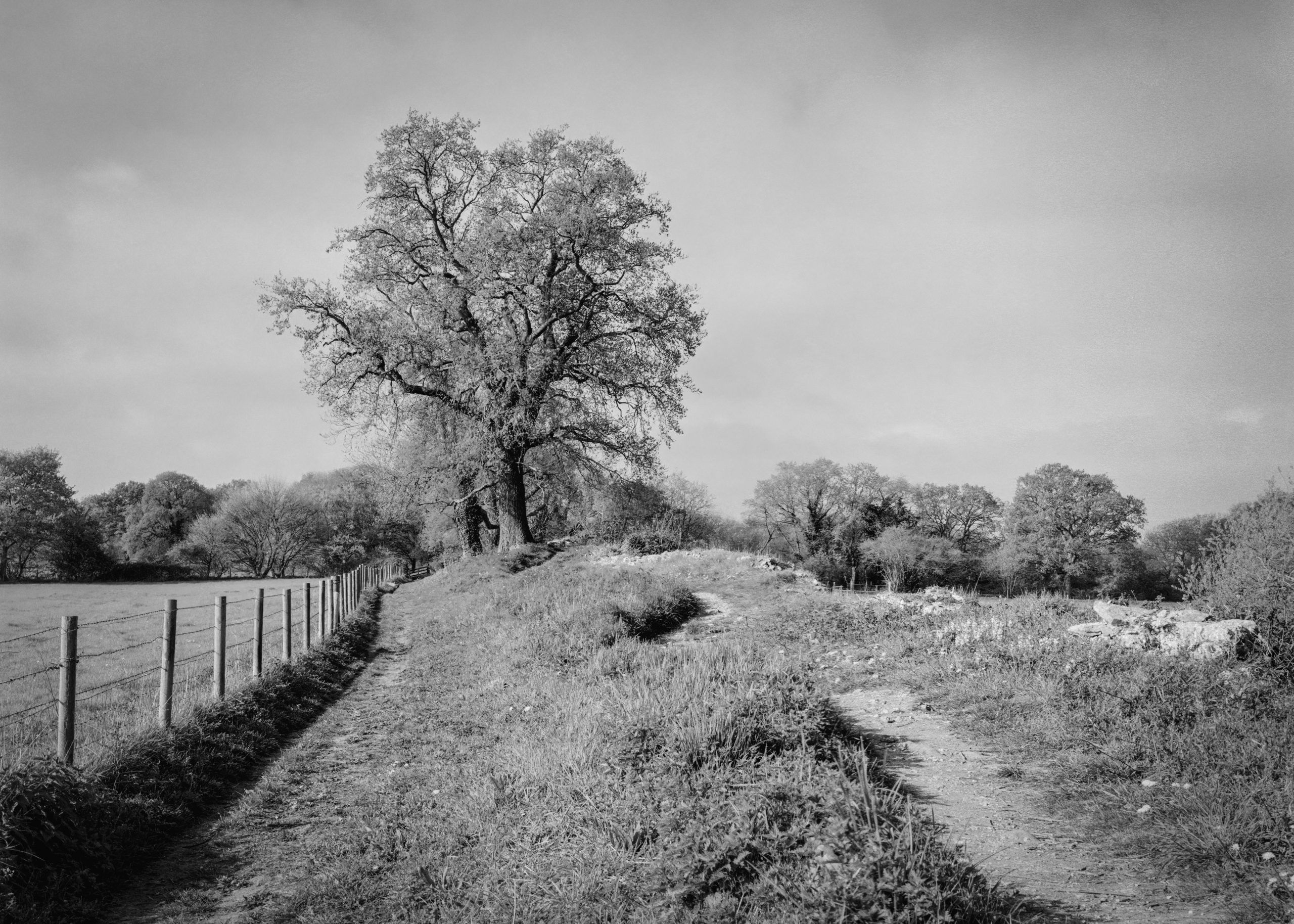
Navigating the shooting landscape with the Zenzanon lens required a dance of adjustments. The manual controls, though reminiscent of a bygone era, offered a tactile and deliberate approach to photography. Shifting apertures to play with depth, fine-tuning focus to capture nuances, and adjusting shutter speeds for varying lighting conditions became second nature. The camera’s modular design also allowed for seamless transitions between compositions, enhancing the fluidity of the shooting experience.
The overall feel of using a medium format camera like the Bronica is akin to stepping into a realm where each frame carries an inherent gravitas. The larger negative size promises images with a richness and tonality that elevate them beyond the ordinary. Composing through the viewfinder added a different dimension to the process, inviting a more contemplative approach to framing and storytelling.

In my hands, the Zenzanon 75mm F2.8 Lens transformed each shot into a deliberate act of expression. The shooting experience became a dialogue between the equipment and the artistic vision, paving the way for a visual narrative that bore the distinct imprint of medium format photography.
Challenges Faced
The transition to medium format presented a learning curve that unfolded with each click of the shutter. Handling the intricacies of the Bronica manual controls required a degree of finesse and familiarity. Adjusting to the nuances of composing through the EA II Metered Prism viewfinder demanded a shift in perspective, both figuratively and literally. Initially, the sheer size of the camera, though exuding a vintage charm, posed a physical challenge that demanded an adaptation in shooting posture.
Achieving precise focus, especially in scenarios with shallow depth of field, emerged as a primary challenge. The manual focus mechanism, while offering a tactile connection to the process, demanded a keen eye and steady hand. Overcoming this challenge involved a measured approach, experimenting with different apertures, and fine-tuning focus techniques. The learning curve, rather than a deterrent, became an integral part of the creative journey, fostering a deeper understanding of the craft.
As the challenges unfolded, each one became a stepping stone toward refinement. Future shoots are anticipated as opportunities for growth and enhancement. Planning to improve involves a commitment to continuous learning, experimenting with various shooting conditions, and honing the skills needed to seamlessly navigate the medium format terrain. The challenges faced during the initial shoot, rather than deterring the creative spirit, have become catalysts for a more nuanced and evolved photographic practice.
In the face of challenges, the Bronica ETRSI became not just a tool but a companion in the journey of creative exploration. The resolve to overcome hurdles has only deepened the connection with this vintage marvel, setting the stage for an even more enriched visual odyssey in the days to come.
Initial Impressions of the Results
The anticipation thickens as the Bronica ETRSI relinquishes its duty to capture moments, and the film loaded with visual stories now awaits the transformative alchemy of film development.
As the exposed film rests within the confines of the camera, each passing moment heightens the eagerness to witness the tangible fruits of the photographic endeavour.
The journey from shutter click to developed negatives is a pilgrimage of patience and wonder, a bridge between creation and revelation. As the film awaits its metamorphosis, the initial impressions are a dance between eager excitement and the serene acceptance of the mysteries that lie in the latent images.
Conclusion
My inaugural chapter with the Zenza Bronica ETRSI have unfolded as a symphony of discovery and creation. In retrospect, this section encapsulates the essence of my initial experience with this vintage medium format marvel. The Zenzanon 75mm F2.8 Lens and the camera’s character have woven a narrative that transcends the tangible, leaving me with a profound sense of satisfaction and excitement.
What’s Next?
My future with the Zenza Bronica ETRSI unfurls like an uncharted scroll, inviting exploration and experimentation. Teasing the next chapter, plans are underway for projects that push the boundaries of creativity. Collaborations with fellow enthusiasts, unconventional shooting locations, and a deep dive into the intricacies of medium format photography are on the horizon. The Zenza Bronica, with its promise of timeless artistry, stands ready to be a companion in upcoming endeavors. Watch this space for upcoming projects that transcend the ordinary and redefine the boundaries of visual storytelling.
Final Thoughts
As the curtain falls on the first leg of this photographic journey, final reflections paint a canvas of gratitude, curiosity, and a profound respect for the craft. The Zenza Bronica ETRSI, with its mechanical grace, has not just documented moments but has become an integral part of the storytelling process. The blog has been a chronicle of discovery, challenges met, and the magnetic pull of analogue photography.
To all fellow explorers and enthusiasts, your thoughts, questions, and shared experiences are invaluable. Let this be a collaborative space where the love for photography thrives, and the echoes of creativity reverberate. Share your thoughts below and let’s embark on this visual odyssey together.
Specifications
| Feature | Details |
|---|---|
| Camera Model | Zenza Bronica ETRSi |
| Film Format | 120/220 Medium Format Film |
| Lens Mount | Bronica ETR Mount |
| Lens Compatibility | Zenza Bronica ETR series lenses |
| Focusing System | Manual Focus |
| Viewfinder Type | Waist-Level Finder with Interchangeable Prism |
| Viewfinder Magnification | 0.75x |
| Exposure Modes | Manual |
| Shutter Speed Range | 8s to 1/500s + B (Bulb) |
| Metering System | External Light Metering (optional) |
| Film Back Compatibility | Interchangeable 120 and 220 film backs |
| Multiple Exposures | Yes |
| Mirror Lock-Up | Yes |
| Film Advance | Manual Wind, Lever Operated |
| Double Exposure | Manual Override for Multiple Exposures |
| Flash Sync | X-sync at 1/60s |
| Tripod Mount | 1/4″-20 |
| Battery Type | 6V Silver Oxide (One 4LR44 or 4SR44) |
| Dimensions (W x H x D) | 145 x 130 x 122 mm |
| Weight | 1,100g (Body Only) |
FAQs
Is the Bronica ETRSi reliable?
Yes, the Bronica ETRSi is generally considered a reliable medium format film camera. It was produced by Zenza Bronica, a reputable Japanese manufacturer known for producing high-quality cameras. However, like any electronic or mechanical device, the reliability can depend on factors such as maintenance, usage, and overall condition. It’s advisable to purchase from reputable sources and ensure the camera has been well-maintained.
What is the difference between Bronica ETRS and ETRSi?
The Bronica ETRSi is an upgraded version of the Bronica ETRS. The main differences lie in the ETRSi’s improved features. The ETRSi also has additional exposure modes and a redesigned grip for better ergonomics. While the ETRS is a solid camera, the ETRSi offers enhanced functionality and convenience.
Are Bronica lenses good?
Yes, Bronica lenses are generally well-regarded for their optical quality. Zenza Bronica produced a range of lenses for their medium format cameras, including the ETRSi. These lenses are known for their sharpness, clarity, and colour rendition. However, individual opinions on lens quality can vary, so it’s recommended to read reviews and, if possible, test the lenses before making a purchase.
What film does a Zenza Bronica use?
The Zenza Bronica ETRSi, like other cameras in the Bronica ETR series, uses 120 and 220 medium format film. These films are available in various brands and emulsions. It’s important to note that the Bronica ETRSi is not compatible with 35mm film (Post NOTE: You can buy a Film back for 35mm film, more about this in a separate blog!). Users can choose from a variety of colour and black-and-white films, allowing for creative flexibility in capturing medium format images.
Like what you read? Fuel my next post with a coffee – hit that PayPal button and keep the caffeine flowing!
[wpedon id=77]